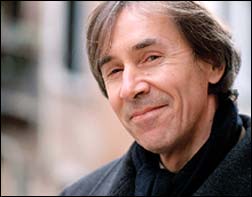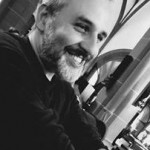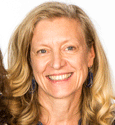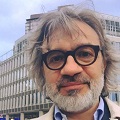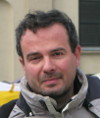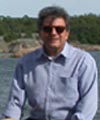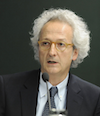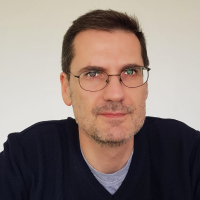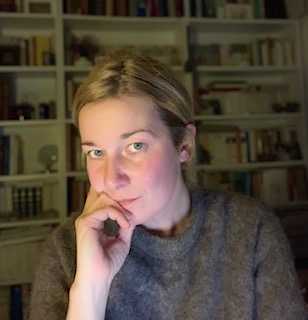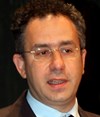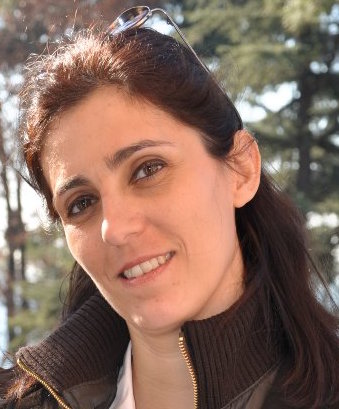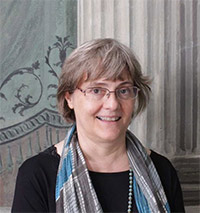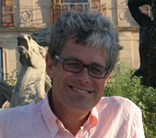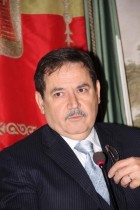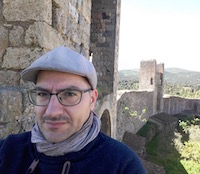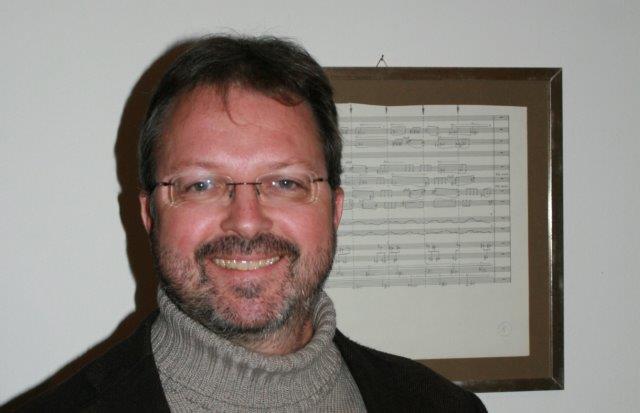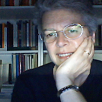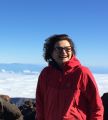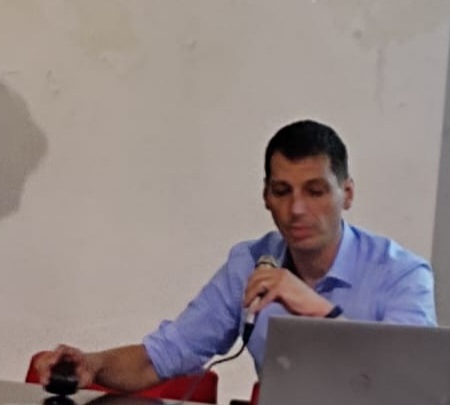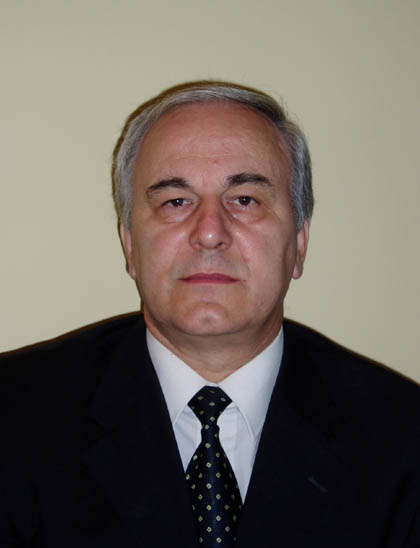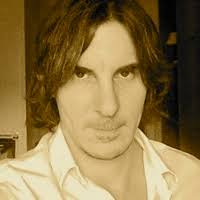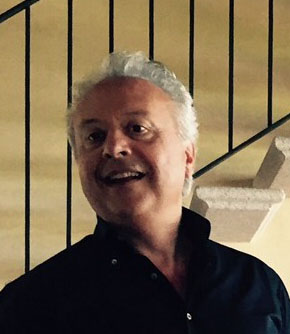Studying at the University of Verona
Here you can find information on the organisational aspects of the Programme, lecture timetables, learning activities and useful contact details for your time at the University, from enrolment to graduation.
Academic calendar
The academic calendar shows the deadlines and scheduled events that are relevant to students, teaching and technical-administrative staff of the University. Public holidays and University closures are also indicated. The academic year normally begins on 1 October each year and ends on 30 September of the following year.
Course calendar
The Academic Calendar sets out the degree programme lecture and exam timetables, as well as the relevant university closure dates..
| Period | From | To |
|---|---|---|
| Semestrino IA | Sep 28, 2015 | Nov 14, 2015 |
| Semestrino IB | Nov 16, 2015 | Jan 16, 2016 |
| Semestrino IIA | Feb 22, 2016 | Apr 16, 2016 |
| Semestrino IIB | Apr 18, 2016 | Jun 4, 2016 |
| Session | From | To |
|---|---|---|
| Sessione invernale | Jan 18, 2016 | Feb 20, 2016 |
| Sessione estiva | Jun 6, 2016 | Jul 30, 2016 |
| Sessione autunnale | Sep 1, 2016 | Sep 30, 2016 |
| Session | From | To |
|---|---|---|
| Sessione estiva | Jul 5, 2016 | Jul 6, 2016 |
| Sessione autunnale | Nov 22, 2016 | Nov 23, 2016 |
| Sessione invernale | Apr 3, 2017 | Apr 8, 2017 |
| Period | From | To |
|---|---|---|
| Festa di Ognissanti | Nov 1, 2015 | Nov 1, 2015 |
| Festa dell'Immacolata | Dec 8, 2015 | Dec 8, 2015 |
| Vacanze di Natale | Dec 23, 2015 | Jan 6, 2016 |
| Vancanze di Pasqua | Mar 24, 2016 | Mar 29, 2016 |
| Festa della Liberazione | Apr 25, 2016 | Apr 25, 2016 |
| Festa dei Lavoratori | May 1, 2016 | May 1, 2016 |
| Festa del S. Patrono S. Zeno | May 21, 2016 | May 21, 2016 |
| Festa della Repubblica | Jun 2, 2016 | Jun 2, 2016 |
| Vacanze estive | Aug 8, 2016 | Aug 15, 2016 |
Exam calendar
Exam dates and rounds are managed by the relevant Culture and Civilisation Teaching and Student Services Unit.
To view all the exam sessions available, please use the Exam dashboard on ESSE3.
If you forgot your login details or have problems logging in, please contact the relevant IT HelpDesk, or check the login details recovery web page.
Should you have any doubts or questions, please check the Enrollment FAQs
Academic staff
 bernard.aikema@univr.it (per tutti), aikemaforstudents@gmail.com (per studenti)
bernard.aikema@univr.it (per tutti), aikemaforstudents@gmail.com (per studenti)
 +39 045802 8197
+39 045802 8197
Amato Gianfranco
 gianfranco.amato@univr.it
gianfranco.amato@univr.it
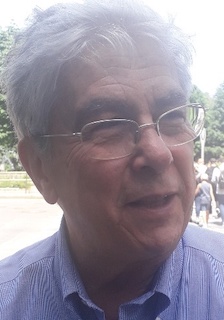
Avezzu' Guido
 guido.avezzu@univr.it
guido.avezzu@univr.it

Bassetti Massimiliano
 massimiliano.bassetti@univr.it
massimiliano.bassetti@univr.it
 045802 8376
045802 8376
 maurizio.boscaini@univr.it
maurizio.boscaini@univr.it
 vincenzo.giannotti@univr.it
vincenzo.giannotti@univr.it
 luca.leone@univr.it
luca.leone@univr.it
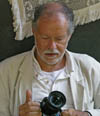
Mastrocinque Attilio
 attilio.mastrocinque@univr.it
attilio.mastrocinque@univr.it
 +39 045802 8386
+39 045802 8386
 marco.menato@univr.it
marco.menato@univr.it
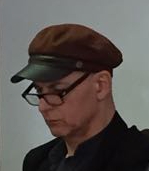
Pasini Roberto
 pasini.roberto@univr.it
pasini.roberto@univr.it
 +39 045802 8121
+39 045802 8121
 alberto.scandola@univr.it
alberto.scandola@univr.it
Study Plan
The Study Plan includes all modules, teaching and learning activities that each student will need to undertake during their time at the University.
Please select your Study Plan based on your enrollment year.
1° Year
| Modules | Credits | TAF | SSD |
|---|
One course to be chosen among the followingOne course to be chosen among the followingOne course to be chosen among the followingOne course to be chosen among the followingForeign language B1 (CB Test)2° Year activated in the A.Y. 2016/2017
| Modules | Credits | TAF | SSD |
|---|
One course to be chosen among the following3 course to be chosen among the following4 course to be chosen among the following3° Year activated in the A.Y. 2017/2018
| Modules | Credits | TAF | SSD |
|---|
3 course to be chosen among the followingOne course to be chosen among the following| Modules | Credits | TAF | SSD |
|---|
One course to be chosen among the followingOne course to be chosen among the followingOne course to be chosen among the followingOne course to be chosen among the followingForeign language B1 (CB Test)| Modules | Credits | TAF | SSD |
|---|
One course to be chosen among the following3 course to be chosen among the following4 course to be chosen among the following| Modules | Credits | TAF | SSD |
|---|
3 course to be chosen among the followingOne course to be chosen among the following| Modules | Credits | TAF | SSD |
|---|
Legend | Type of training activity (TTA)
TAF (Type of Educational Activity) All courses and activities are classified into different types of educational activities, indicated by a letter.
Type D and Type F activities
Modules not yet included
History of Contemporary Art (i+p) (2016/2017)
Teaching code
4S02170
Credits
12
Coordinator
Roberto Pasini
Language
Italian
Also offered in courses:
- The History of Contemporary Art (p) of the course Bachelor’s degree in Humanities
- The History of Contemporary Art (i) of the course Bachelor’s degree in Humanities
- History of Contemporary Art (i+p) - I MODULO PARTE (I) of the course Bachelor’s degree in Humanities
- History of Contemporary Art (i+p) - II MODULO PARTE (P) of the course Bachelor’s degree in Humanities
The teaching is organized as follows:
I MODULO PARTE (I)
Credits
6
Period
Sem. IA (31.10.16 sosp.lezioni)
Academic staff
Roberto Pasini
II MODULO PARTE (P)
Credits
6
Period
Sem. IB
Academic staff
Roberto Pasini
Learning outcomes
The teaching of contemporary art history examines the historical-artistic path from the end of ' 700 - when the space revolution takes place moving by Turner as part of romanticism, which gives life to the contemporary space - until the end of the ' 900, which states the poetics of Postmodernism. Covers two centuries of research and artistic issues that are examined through a careful reading of the works together with a wide survey on cultural contexts, aware that the art history is composed of two inseparable elements and also important, the art and the history: special paths must always be placed in the context where you embody for finding the right combination of individual contributions and general panorama.
The study of contemporary art history is performed on two tracks, autonomous but linked: on the one hand, the analysis of artists, movements and situations on the specific poetic style, and continued interweaving between the individual and the context size; on the other hand, the investigation of the relationships that bind the historic path to the various fields of culture such as literature, philosophy, science, cinema, media, according to the principle of communicating vessels at the cultural level. In this way we achieve the tools to understand the connection between artistic research and the time in which it exerts, overview of the moment, of the period, and developing a synoptic knowledge that allows you to understand more thoroughly the reasons of cultural and artistic metabolism.
The second part of the course deepens in a monograph, but still opening to artistic context and sociocultural, the protagonists of contemporary art, major movements and the most significant issues, an overview of successful convergence between art and culture.
Program
Part 1: Basic (i)
Parses the entire path of contemporary art, with particular attention to the protagonists and the movements that have characterized. These major topics:
- What is art?
- Method and general concepts of interpretation
- Modern space and contemporary space
- Turner and enlarged contemporaneity
- Impressionism and beyond: Monet and the cycle of Water lilies, Degas and the cycle of Nudes
- Cézanne and narrow contemporaneity
- The Symbolism: Seurat and Pointillism, Gauguin and Synthetism
- Matisse and Fauvism. Kirchner and Expressionism
- Picasso and Cubism. Boccioni and Futurism
- Kandinsky and the Biomorfismo. Mondrian and Abstraction
- De Chirico and Metaphysics. The poetics of call to order
- Duchamp and Dadaism. Figurative Surrealism (Magritte, Dali) and non-figurative Surrealism (Mirò, Masson)
- The Informal in the United States, in Europe and in Italy
- The poetics of object, from Minimalism to Pop Art
- The non-artistic research: Body Art, Conceptualism, Arte Povera
- Postmodernism and recent researches
Bibliography:
R. Barilli, L'arte contemporanea (1984), Feltrinelli, Milano, 2005 (chaps. 1-14)
R. Pasini, Che cos'è l'arte? (2007), QuiEdit, Verona, 2012
(for quick availability you can join the library QuiEdit, Verona)
R. Pasini, L'informe nell'arte contemporanea (1989), Mursia, Milano, 2012
R. Pasini, La dispensa di Suzanne. Miti, errori e false credenze nell'arte contemporanea, Mursia, Milano, 2013
Part 2: Advanced (p)
Section 1
Sergio Romiti, 50 years since the great anthologic exposition in Bologna
The work of Sergio Romiti (Bologna, 1928-2000) will be analyzed. He is one of the most interesting artists of the italian and international scene in the second half of the '900. 2016 is the fiftieth anniversary of the great anthologic exposition with which, in fact, the Gallery of modern art of Bologna was inaugurated in 1976 (Today named MAMBO).
Essential biography:
M.Calvesi, Diario di una scrittura su Romiti, catalogo Galleria d’arte moderna, Bologna, 1976 (Grafis, Bologna) (The catalogo is out of stock, copies will be available)
R.Pasini, Warhol e Romiti. Un confronto assurdo, Pendragon, Bologna, 2007 (the Sergio Romiti section)
Section 2
Thumbs up, thumbs down
Art in Verona during the first half of the '900: Birolli and Flangini
Two artists born and operating in Verona during the first half of the '900 will be analyzed, Renato Birolli (Verona, 1905-Milano, 1959) and Giuseppe Flangini (Verona, 1898-1961).
Sepcifications of both the artists will be highlighted, emphasizing that the first deserves a careful redefinition and a solid revaluation, while the second, despite being an moderately interesting artist, will be strongly debunked compared with the embarassing promotion he has enjoyed.
Essential bibliography:
A text will be available in good time for the final test.
Examination Methods
Assessment methods and criteria
The examination test focuses on artists and their works and views present in texts, which the student must know. The exam consists of a written test. The main valuation parameters are: 1) actual interest and level of preparation; 2) mastery of the field of study; 3) argumentative capacity; 4) expressive quality. Please note that texts with copyright cannot be reproduced by any means, including the photocopy, which has not been authorized, and in any case not exceeding 15%. Please note that the purchase of texts is free and can be replaced by loan librarian.
Reception mode
There are two types offered: front reception and telematics. The use of e-mail has become in recent years a very beloved by students, especially those who have difficulties to go to the front, those who do not attend classes, those who are in Erasmus etc., and then becomes necessary a useful formalization. Therefore, in addition to the front reception, for which it is advisable to book via email, the electronic receipt shall be established, usually on Wednesday, for mail that is believed to have caused a response (if the e-mail address is accepted and the student has sent the mail to the right address: please then take note: pasini.roberto@univr.it).
Thesis
Students who wish to graduate, for both the bachelor's and master's degree, must according to common sense have in contemporary art history exams an average justifying a thesis in this matter. To carry out the thesis, is an iteration support practice, for both the bachelor and master degree (for students who have graduated with a bachelor's degree in another field). The student is invited to submit to the Professor three arguments, and then the one in which thesis will be carried out will be choiced. Regardless of the field in which you are graduating, students are required to submit a thesis in Secretariat only after having supported all exams. One cannot take account of any requests made by students who have not respected this rule elementary fairness.
Career prospects
Module/Programme news
News for students
There you will find information, resources and services useful during your time at the University (Student’s exam record, your study plan on ESSE3, Distance Learning courses, university email account, office forms, administrative procedures, etc.). You can log into MyUnivr with your GIA login details: only in this way will you be able to receive notification of all the notices from your teachers and your secretariat via email and soon also via the Univr app.
Graduation
List of theses and work experience proposals
| theses proposals | Research area |
|---|---|
| Ambiti di tesi | Art & Architecture - Art & Architecture |
| Stage | Research area |
|---|---|
| Lavorare in archivio | Various topics |
